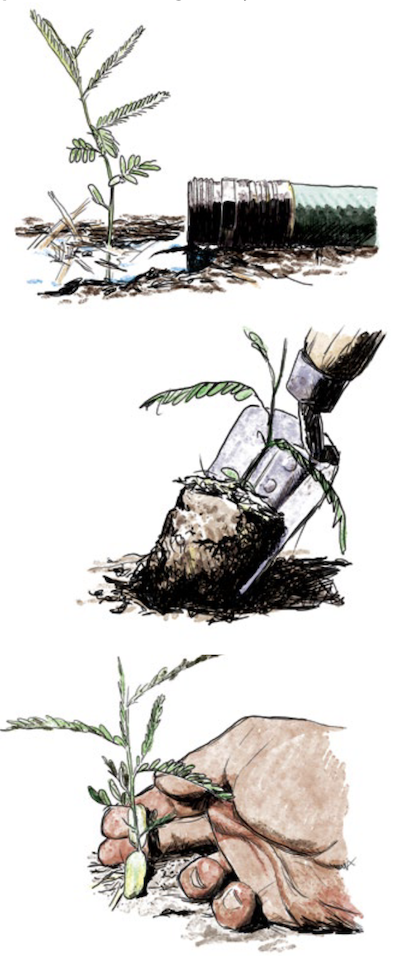Have you ever noticed little trees or plants sprouting in your yard? Well, that’s a tree sprouting on its own, from a seed of a nearby tree or a seed moved with stormwater or by a bird!.
If it’s a native tree, why not keep it! A tree that sprouts on its own just needs a little help to succeed. New trees, shrubs, and native groundcovers come up naturally with rainy seasons. After a rainy season, walk around and assess what has started growing.
Then cage the new trees and shrubs with a little wire fence – to protect it from people stepping on it or wildlife that may eat it. The benefit is this plant likely doesn’t need any additional watering, since it rooted on its own.
Instead of pulling seasonal plants like native wildflowers and groundcovers, let them remain and do their thing. When the season is over, then help become part of organic mulch by “chopping and dropping” or stomping them down.
How To Transplant Native Sprouts

Do you have a native tree or shrub sprout that you want to keep, but it’s not quite in the best place? Here are some tips to help you move the plant. Your success rate will vary depending on local conditions, so observe your plants and learn along the way.
- Transplant when the tree/shrub sprout is smaller, 3 to 12 inches in size. The smaller the sprout, the more likely it is to succeed.
- Transplant during the rainy season or in the cooler season, to reduce heat stress.
- Transplant the day after a rain or soak the soil around the plant the night before digging it up.
- Carefully dig around the plant and preserve as much of its roots as possible when transplanting.
- Dig a hole in the desired location to transplant it. You can make the hole wider and deeper if the soil is really compacted.
- Preserve the root ball when transplanting. Create a small basin around the plant to capture water. Put woody mulch around the plant to reduce evaporation.
- You can also transplant into a pot (1 gallon) particularly if you have several transplants. Care for them to transplant in your yard later or give them as presents to friends or neighbors.
- Observe and love your plant. Water the plant when you transplant it and then water it occasionally the first 3-6 months if the plant looks stressed. Visit your plant, talk to it, and care for it.